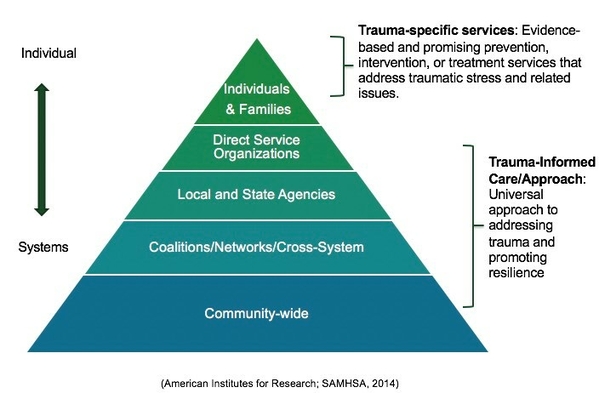Since the effects of childhood trauma do not play out in isolation, an effective response to child trauma should benefit not only children but the communities in which they live. This feeds into what we know from studies about factors that impact a child's growth - they occur within the family, community and also are climate-related.
Multiple studies reveal the extremely high percentage of youth in contact with the law and under the care of social services who have been exposed to violence or have a history of childhood trauma.
The diagram below represents the range of services that can be developed and applied to prevent, intervene or treat traumatic stress and related issues for individuals and families and those trauma-informed approaches which can be used at the level of systems such as local and state agencies, direct service agencies and coalitions, and across the community.
Attached is a guide designed to help child-serving agencies and their partners build a coordinated and more effective response to child trauma, and to support jurisdictions as they look to further coordinate services and response across diverse stakeholders.
The guide is intended for an audience of state or local policymakers, public agency administrators, trauma experts, provider partners, and other stakeholders. If you intend to integrate a collaborative approach in your nation or state as the case may be, the guide is worth a read.
Have a terrific day!



Comments (0)